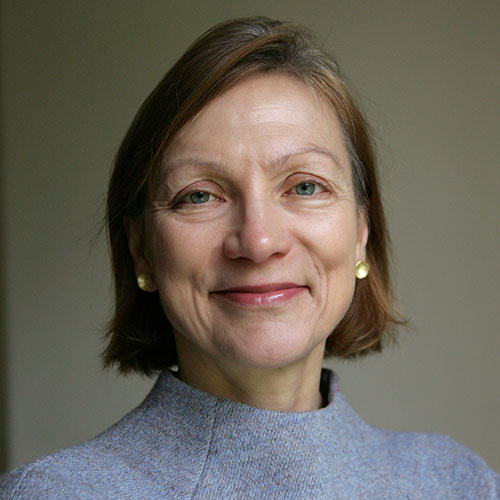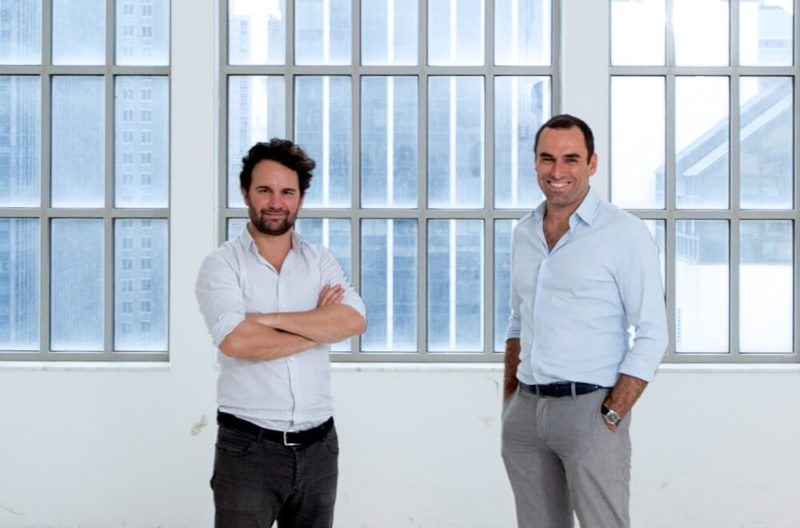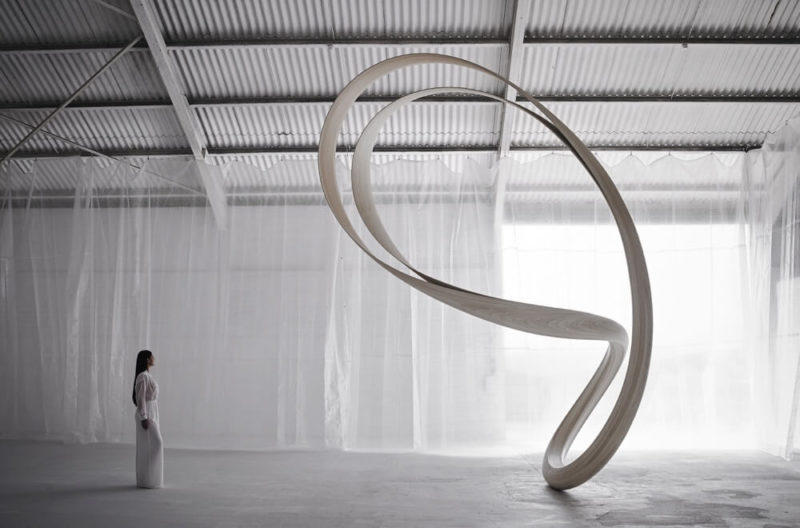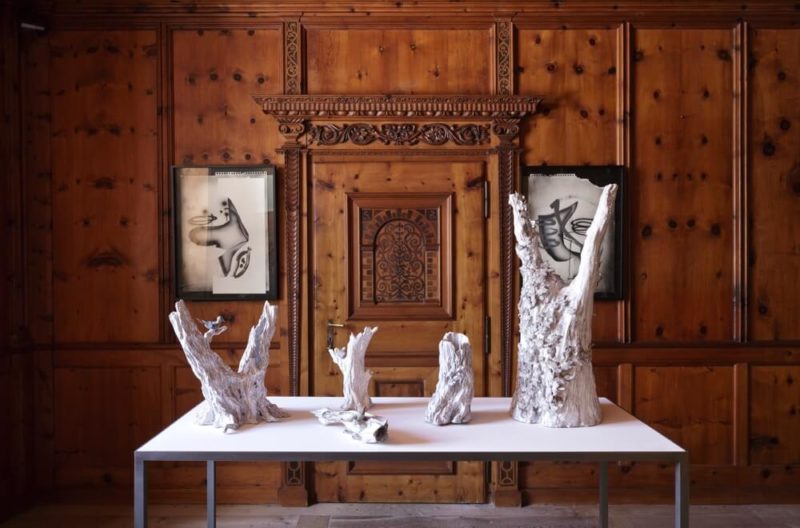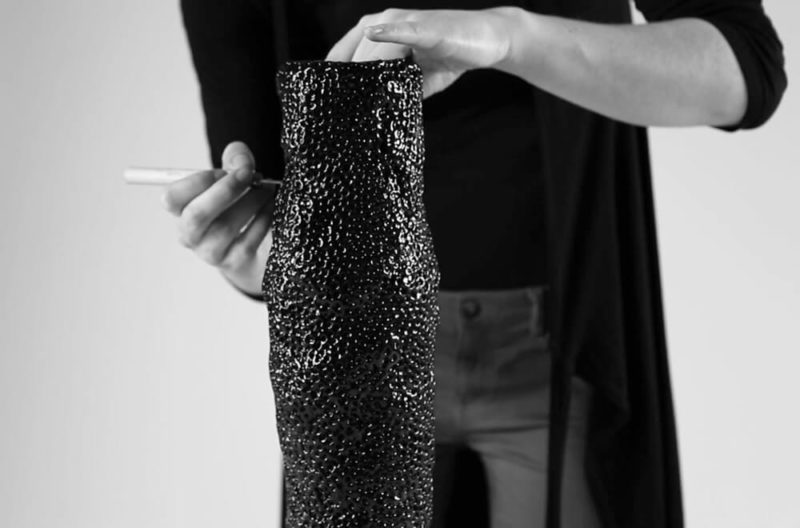In The Hot Seat / Sam Pratt and Valerio Capo
From Hoxton to Mayfair, via Porto Cervo – the story of Gallery FUMI’s eleven extraordinary years in the contemporary design market.
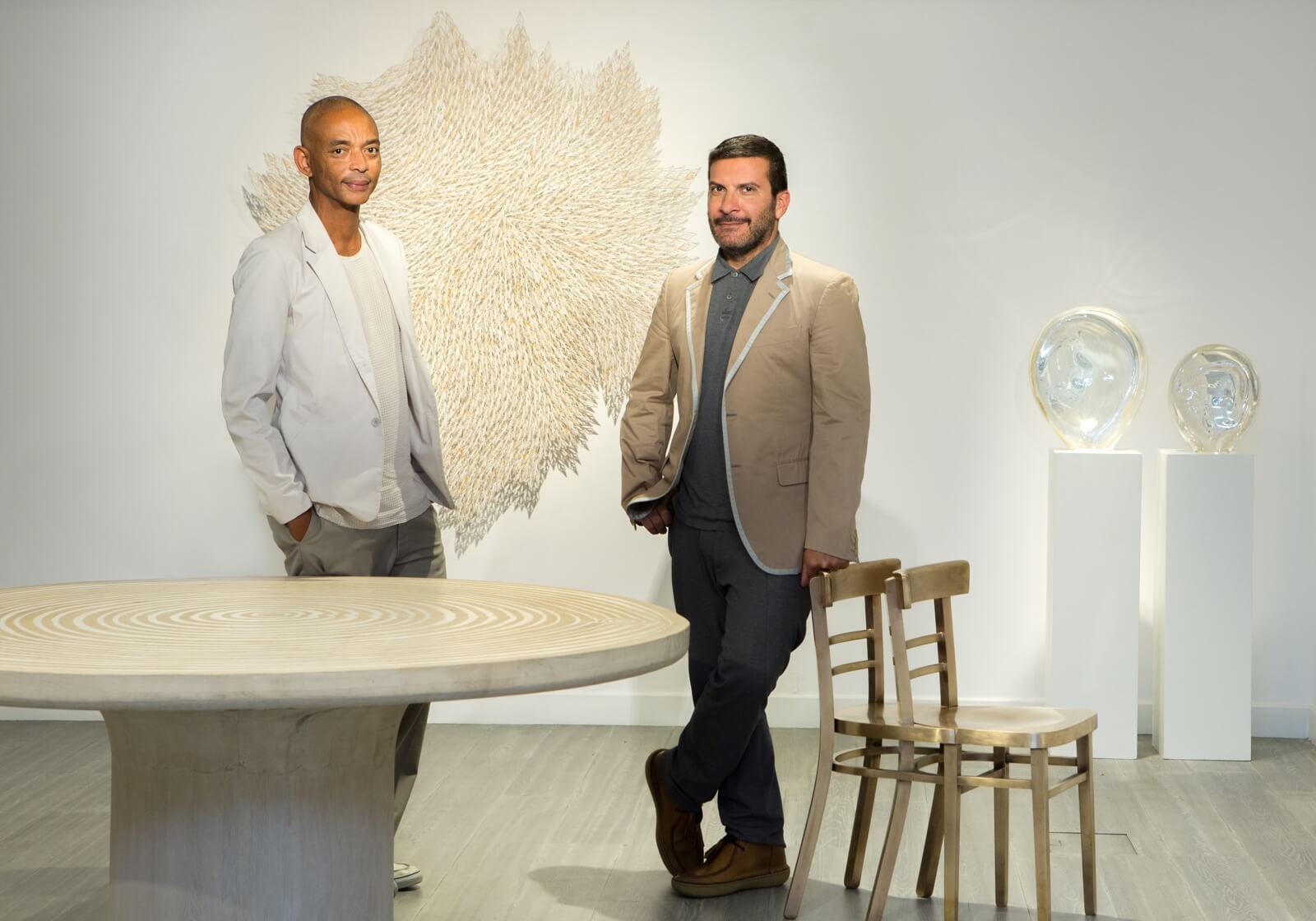
Sam Pratt and Valerio Capo
COURTESY: Gallery FUMI / PHOTOGRAPH: Shira Klasmer
Why did you begin?
Valerio: We had already been together for twelve years, as a couple, and we wanted to explore ways of getting away from our usual 9-5 boring jobs to do something different – to create something new.
Sam: Yes, I was a banker. We wanted to do something that we could be really passionate about. It was a case of pursuing happiness. So we came up with this marvellous idea of starting a gallery. FUMI was born. And we really had no idea what we were doing.
What were you seeking, right from the start?
Valerio: We wanted to do something that was totally unique and which reflected who we are. Before, we had been mainly collecting mid-century design pieces – Gio Ponti, Sarfatti.
Sam: And so our very first show was mid-century stuff. But then we realised that that wasn’t really us, and that it was a market that was already crowded. So we thought that we should look at the new, the future, the emerging, rather than going back to the past. We started going to all the graduate shows and fairs, and that was how we met the contemporary designers who we are working with now.
Valerio: Then we moved house from Marylebone to Shoreditch, and the place was completely different …
Sam: It was a huge space, with a different feel, and that focussed our interest more on contemporary pieces. So we bought a piece designed by the Campana Brothers, and a sofa from EDRA that wouldn’t have fitted through the door of our Marylebone apartment.
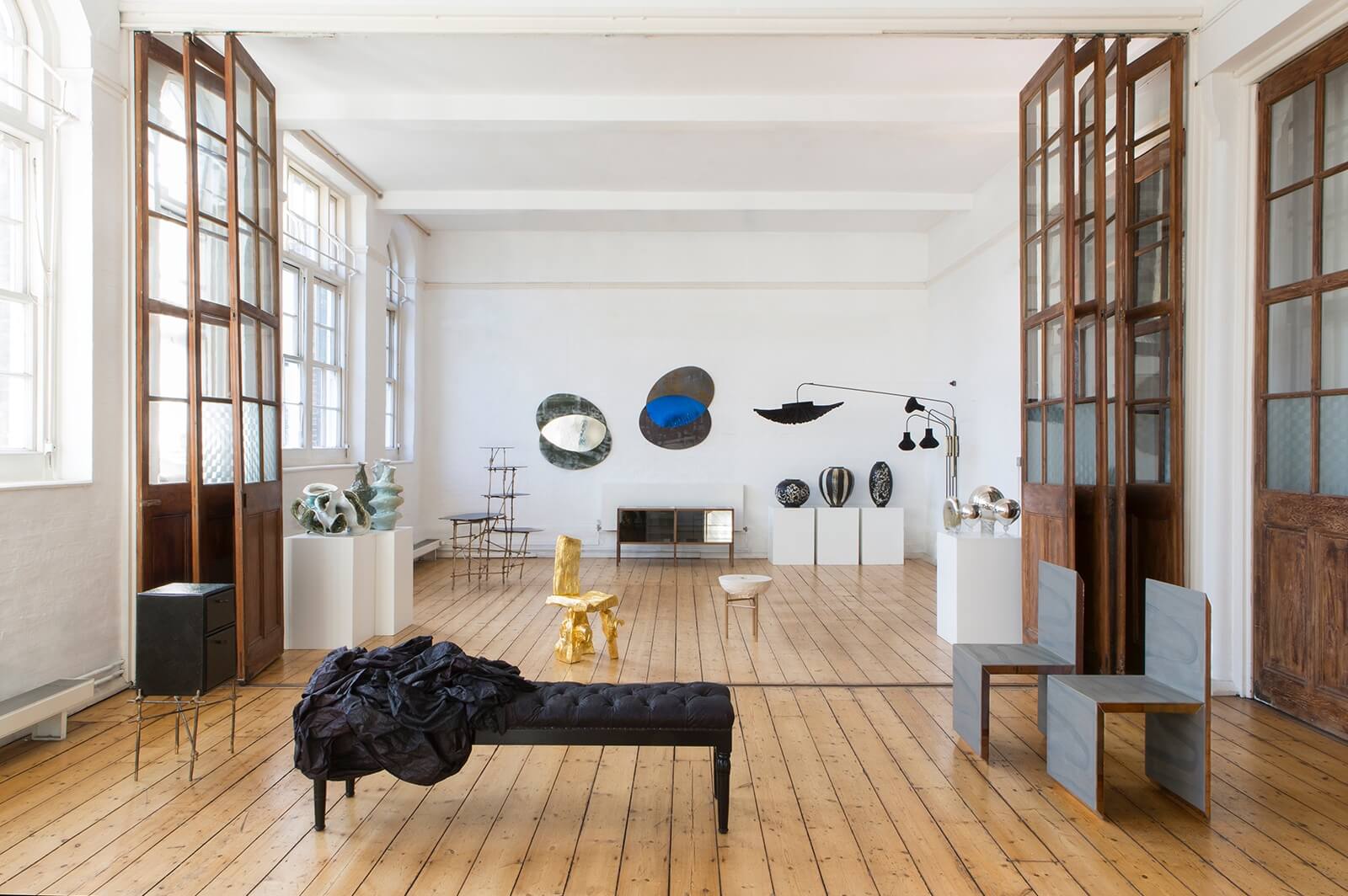
FUMI Hoxton Square, ‘Group Show’, 2016-17
COURTESY: Gallery FUMI
What was the hardest part of getting started?
Valerio: I have a list! We couldn’t even hang a mirror straight, we had no DIY skills whatsoever, and we had no idea how to handle things. We had to get accustomed to working by ourselves, just the two of us.
Sam: Initially Valerio was full-time at the gallery but for the first four or five years I was still doing my day job, which I hated, and the gallery was more like a Saturday job, or an evening job.
Valerio: And then finding things out about the market – realising that our expectations were off the charts! Also the pace of working and selling in a gallery was quite different from what we expected. We expected a much faster pace.
Sam: Remember that this was 2008, just as the economy crashed.
Valerio: We were hoping, with our location, that we would manage to attract the city boys, but they had all been sacked.
Sam: We saw them with their cardboard boxes going home rather than coming in to our showroom. Compared with other galleries which were in Mayfair, or had been around for a very long time, we were total novices based in Shoreditch. We wanted to know, how do we get these people with disposable income to come and see us?
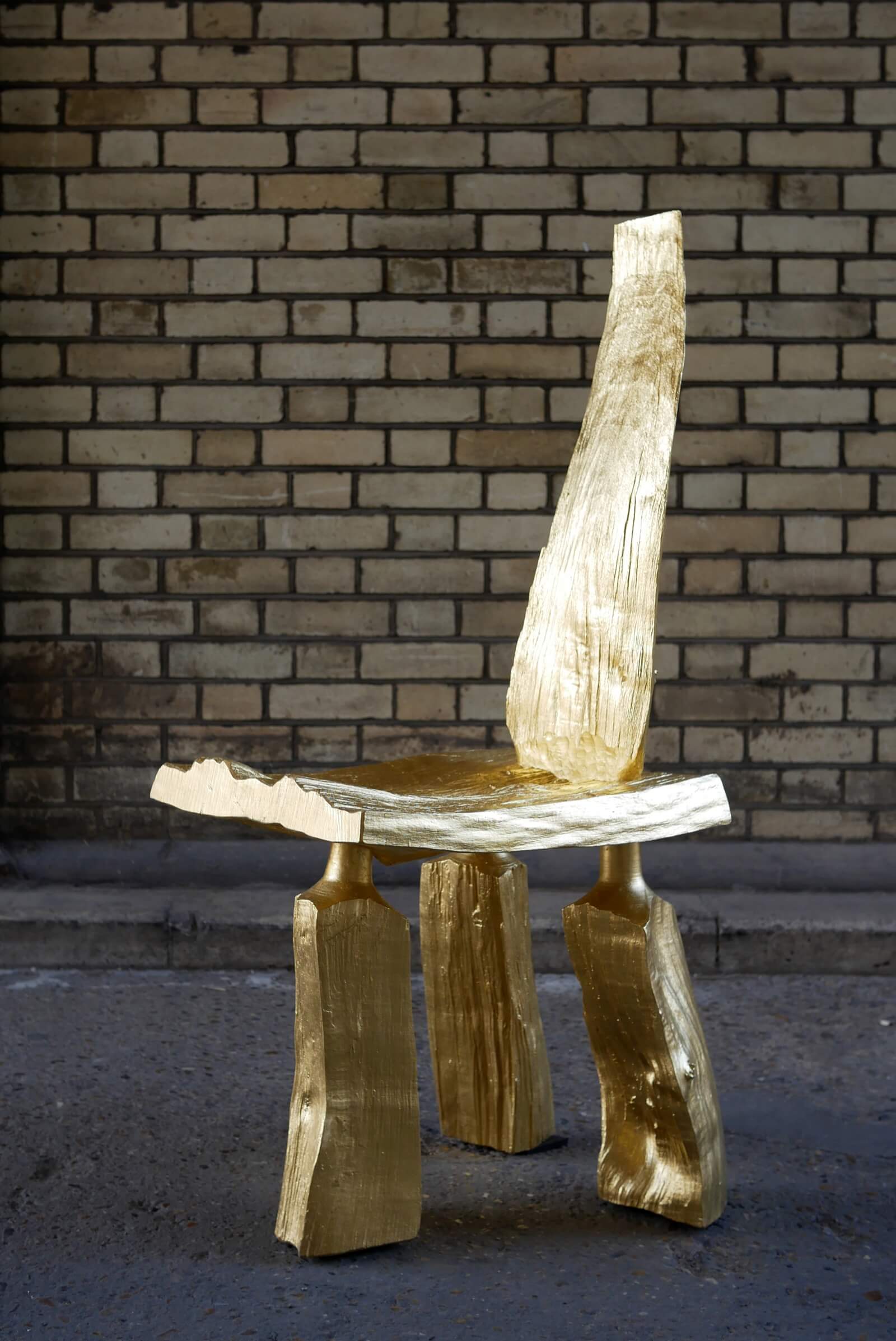
Max Lamb, ‘Gold Cleft Chair 3’, 2018
COURTESY: Gallery FUMI
What was a key turning point?
Valerio: There was a turning point right at the beginning: we were meeting so many designers who were interested in working with us, we got a lot of interest from the press, and people who knew about the market would come and visit us. So we knew that we were doing something right. We then thought that maybe we should change our view of the audience we were appealing to, maybe we should aim our gallery at the CEO of the place where the city boys were working – that helped a lot.
Sam: Yes, we redefined our target audience and aimed for one that was more mature, more senior, with a greater disposable income.
Valerio: It meant that we had to focus much more attention on quality. This audience wanted well-made objects, not last-minute, roughly put together pieces that might fall apart.
Sam: It also meant that we needed to work much more closely with the young designers, who were making these hand-crafted things in their studios – sometimes even in their homes – in order to direct the quality and work out how these pieces were going to be made.
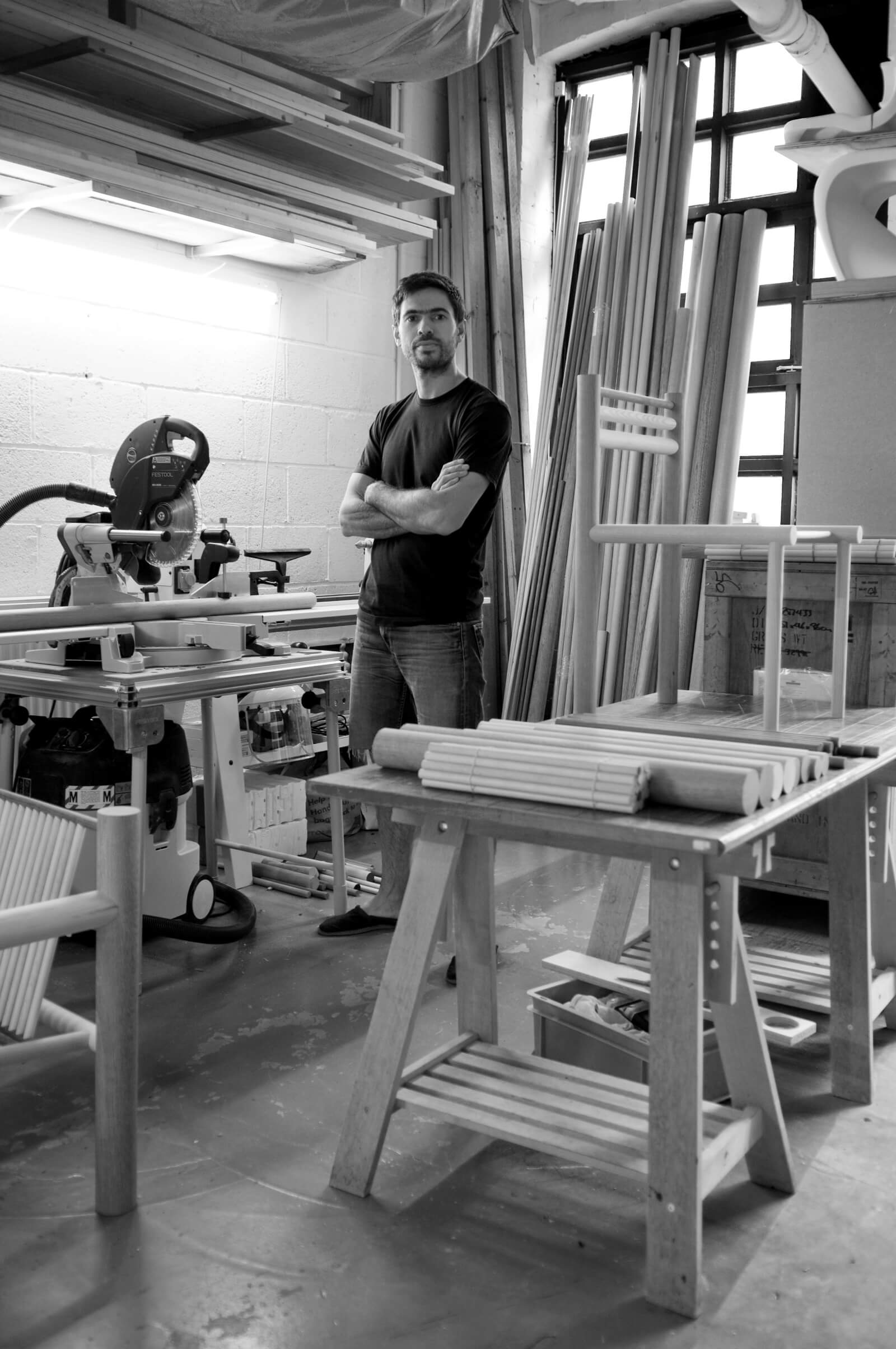
Max Lamb in his workshop
COURTESY: Gallery FUMI / PHOTOGRAPH: Stephane Grand
Valerio: And then in 2009 we started doing a summer season in Porto Cervo, in Sardinia, and that totally changed things. We were invited by Rossana Orlandi [the legendary Italian design gallerist]. She had energy and wanted to animate the undeveloped port area, down by the harbour. In this huge complex, there were only three or four units open, and we had to dress up all of the other units to make them look as if they were alive.
Sam: We used to take all this furniture from here, shipping it on our own as we had no staff, and we would have these fabulous evenings, with rugs outside – like a well-curated Marrakesh. For three months, all these uber rich people in their super yachts would walk past in their flip flops, feeling relaxed, and they would see FUMI, and it would look unusual, because back then there was not much contemporary collectible design.
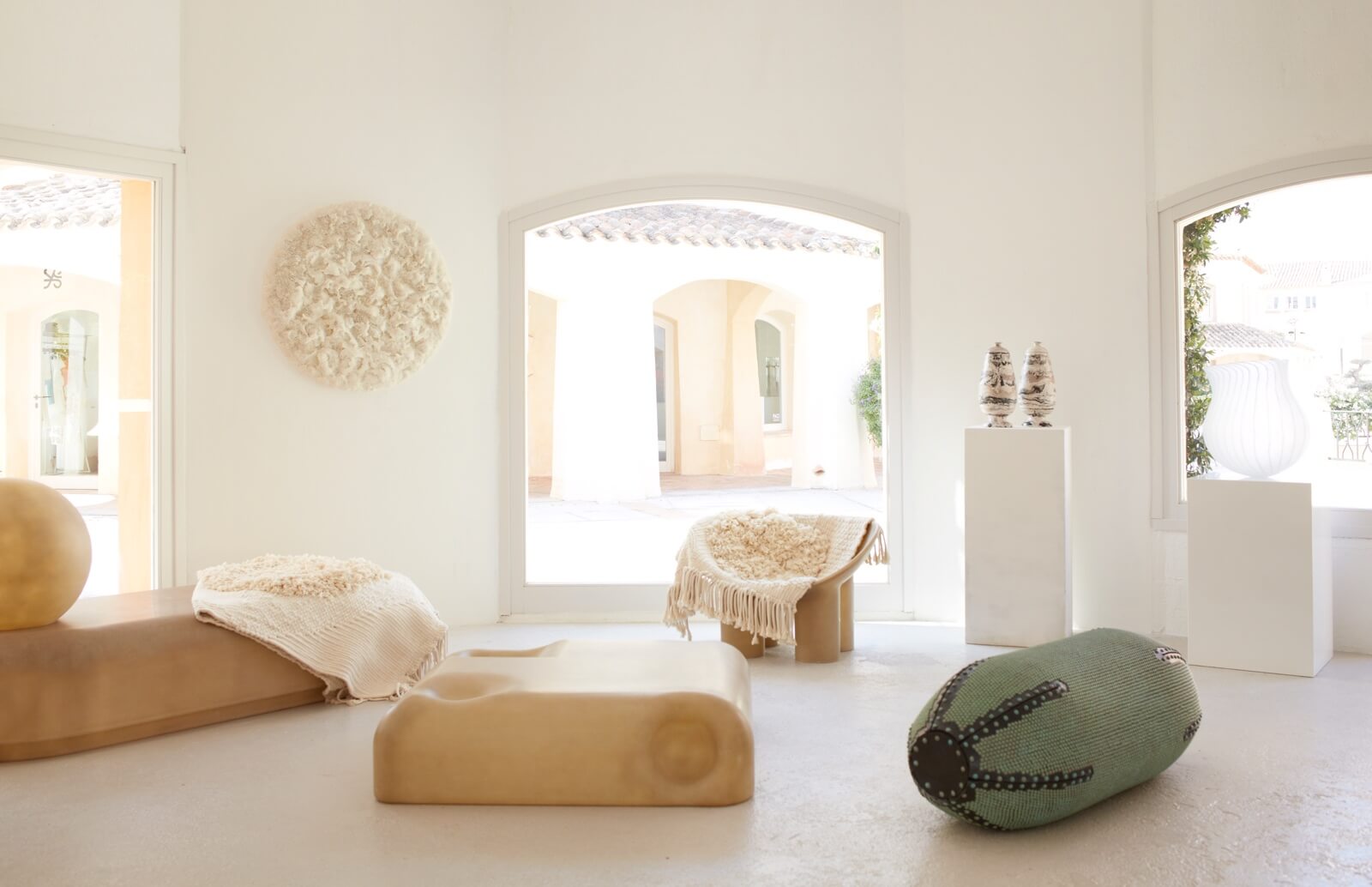
FUMI at Porto Cervo, 2014
COURTESY: Gallery FUMI
Valerio: Passers by would be attracted by these unusual objects made with these crazy methods. And because they were relaxed we were able to have conversations with them, unlike at Basel where they come with an entourage and an art advisor and you cannot say five words to them before they are rushed away.
Sam: The same people come every year, so we developed a real relationship with these people – some have become good friends.
Valerio: One of our first sales was to a woman who has become a very good client and friend. We couldn’t afford air conditioning, so we bought some plastic fans that cost 20 Euro. It was four o’clock in the afternoon and 40 degrees outside, and this client made a very good purchase. When she paid she said, “With some of this money, can you please install some air conditioning!” We definitely did the following year.
Sam: Porto Cervo was a game-changer, because having met us in Sardinia, our clients were then more inclined to come to Shoreditch. They would moan, but they would come and see us, because they knew it would not be a wasted journey. And then our client list grew through word of mouth.
Sometimes when we talk about Porto Cervo people think that it is very relaxed, almost like a holiday. But our gallery opened at ten and was open until two or three o’clock in the morning.
Valerio: And we had to be there. If our assistant was there, people wouldn’t walk in, so we felt obliged to be there ourselves.
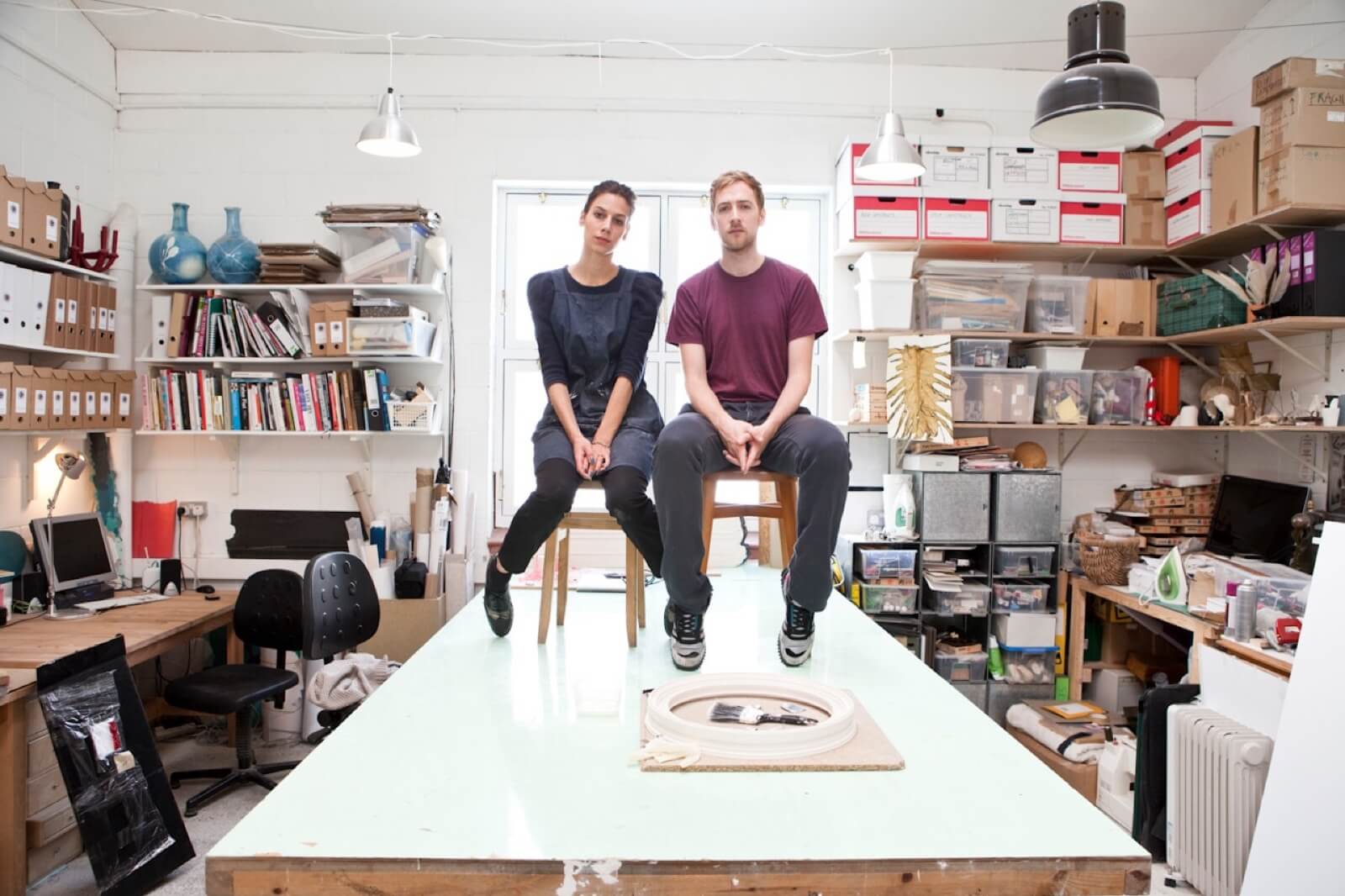
Sarah van Gameren and Tim Simpson of Studio Glithero
COURTESY: Gallery FUMI
What were the criteria for getting behind an artist or a project?
Sam: It was and always has been our motto that talent and personality, almost in equal measure, are paramount. We never work with anyone that we do not like.
Valerio: We have only made that mistake twice. Never again!
Sam: And we never show anything we would not want to own personally. There is a total belief in everything we do at FUMI. We have total belief in our designers because we think they are hugely talented, and because we like them as people. In fact quite a few of our artists are friends, they know each other very well, so there some kind of family feeling.
Valerio: And in the beginning we would be introduced to new artists by our existing artists – so Glithero, for instance, pointed us to Rowan Mersh …
Sam: … and Max Lamb introduced us to Johannes Nagel.
Valerio: It is also really important that the objects are made by our artists, mostly by their own hands in a studio, so the hand-made element – with its imperfections – are a great feature of our objects.
Sam: I don’t think you would refer to FUMI as sleek!
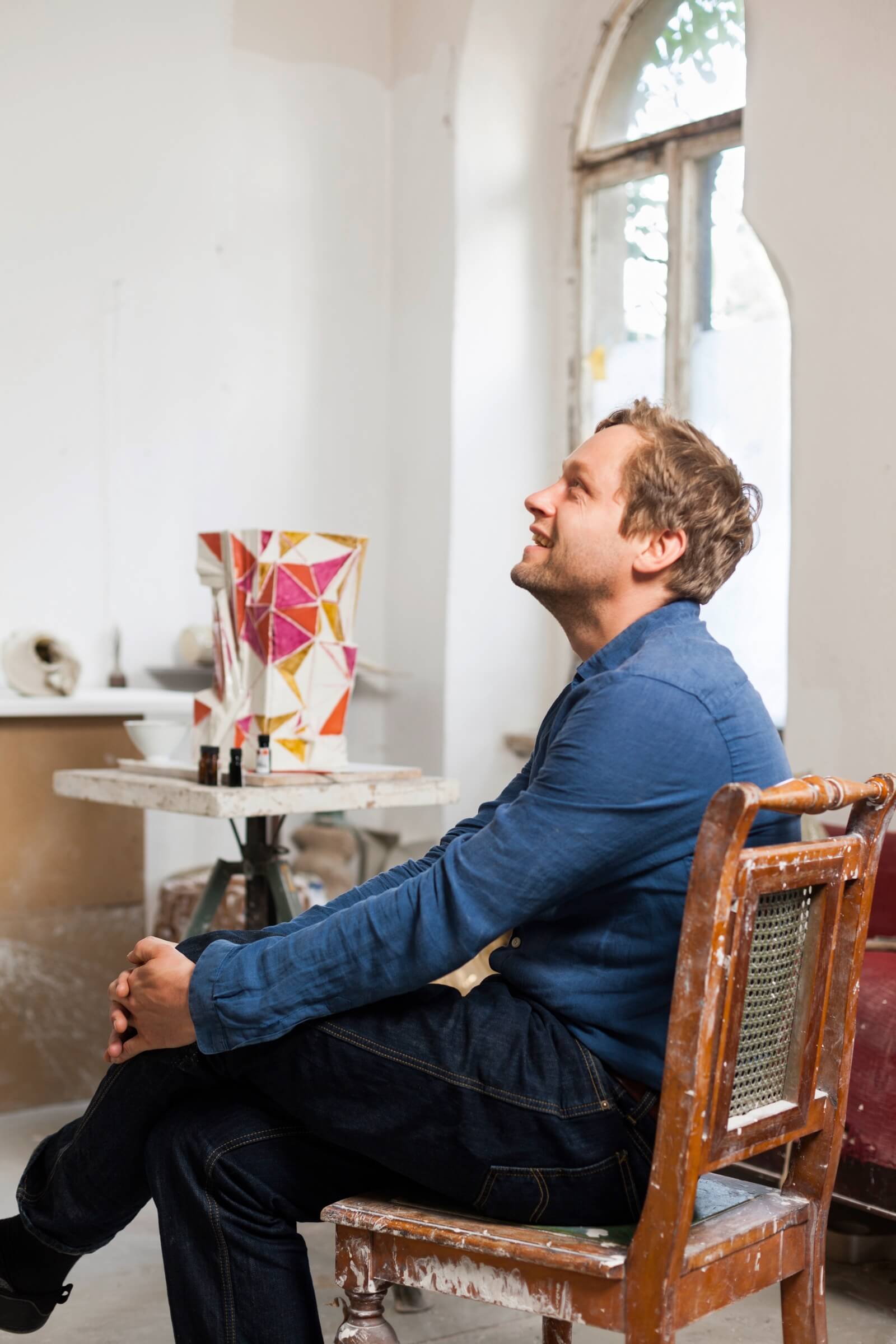
Johannes Nagel
COURTESY: Gallery FUMI / PHOTOGRAPH: Nikolaus Brade
Which has been your favourite moment?
Sam: I couldn’t really give you one, there have been so many moments – in fact the whole FUMI experience has been that moment. I consider ourselves very lucky to have the opportunity to do this, at this time of our lives. Our gamble has worked.
Valerio: For me it was the very first opening that we did, after a few months of starting the business. We did a show called ‘Materialism’ and it attracted an amazing crowd. There was a real buzz that night, and we really thought that something special was happening.
Sam: I think of ‘Corn Craft’, which was so forward looking. Faye Toogood co-curated that show with us. We had Nacho Carbonell in that show, we had Raw Edges design, and Rowan Mersh and Glithero – those people had never really been seen or talked about before. It was a totally crazy show, totally not functional, all made from corn. We thought it was an amazing idea to pull all of that together and show how you could use something so humble to create beautiful things.
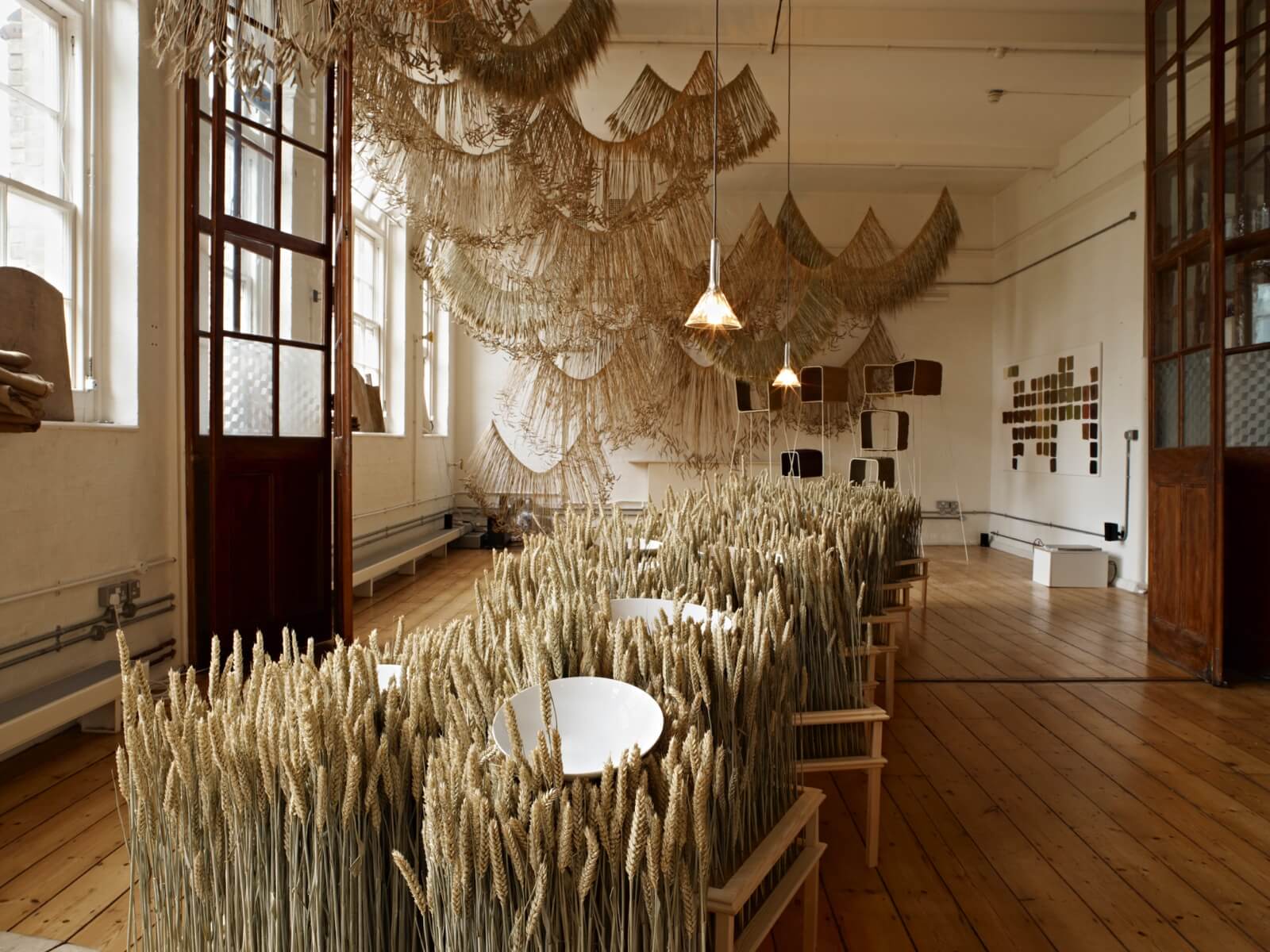
Corn Craft, 2009
COURTESY: Gallery FUMI
What has been the most exciting development in your business?
Sam: For me, it was when we moved to Mayfair.
Valerio: I agree.
Sam: It has also been the most nerve-wracking: are we doing the right thing, are we jumping off a cliff? But all the stars aligned and it just landed on our laps, so we thought it must be for the right reasons and went for it.
Valerio: We only heard about the space becoming available a month and a half before we moved in.
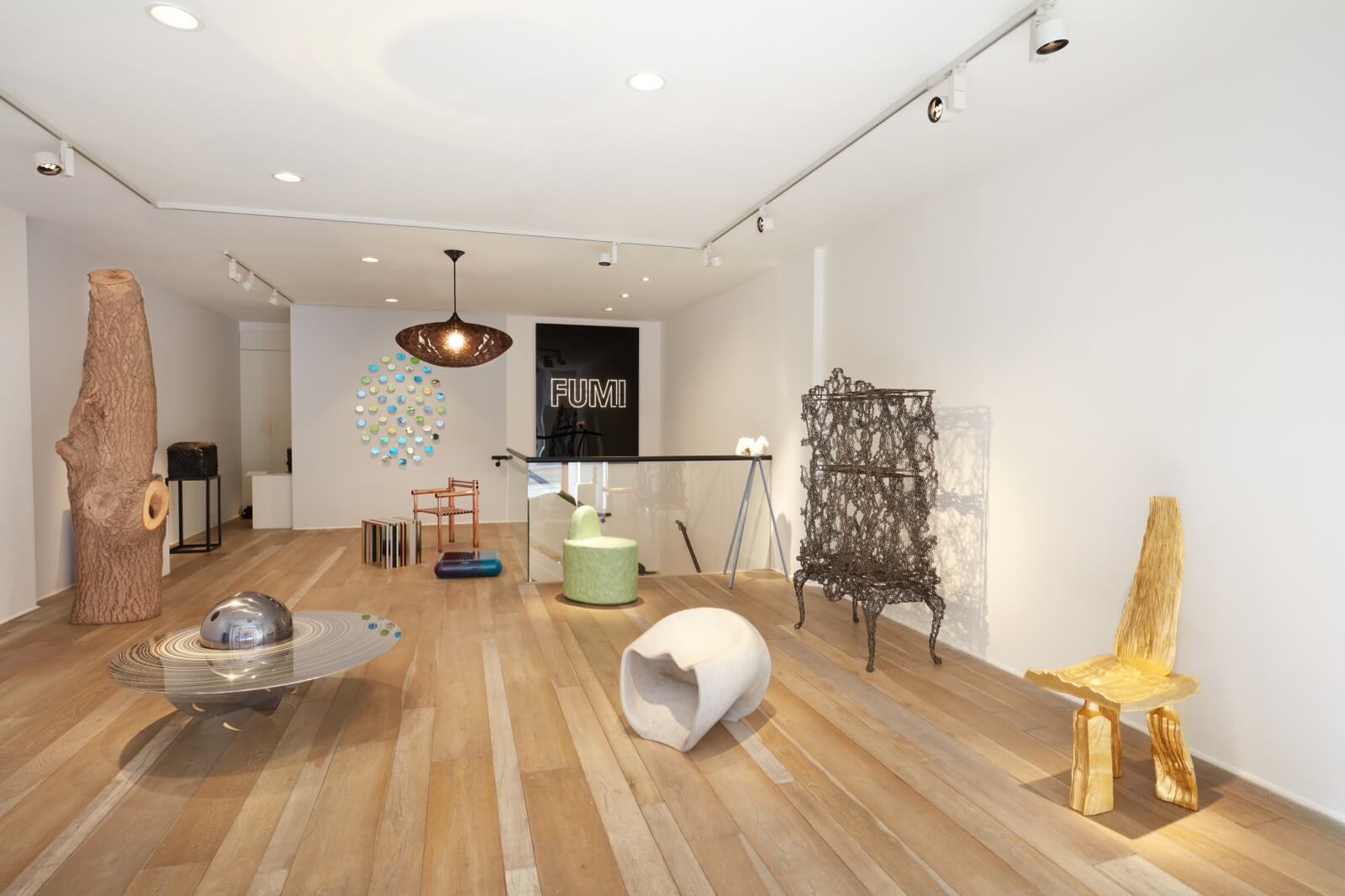
FUMI Mayfair, ‘Now and Then’ exhibition, 2018
COURTESY: Gallery FUMI / PHOTOGRAPH: Tom Hartford
What have been the really good moments of working with artists?
Sam: We love doing studio visits, we can then relate to the maker, the work, and the whole environment. So one of the very first visits was to see Max Lamb. We just called up and he invited us to visit his house and studio, which was full of his early polystyrene pieces. The house was full of it. That is a pretty special memory.
Valerio: I got really excited when we met Lukas Wegwerth. He came to see us at the gallery in Hoxton Square with a trolley full of these beautiful crystallised pots, and we just fell in love with the process and his inspiration for them. It is one of those projects that fits with what we are about at FUMI: the sense of the handmade, and the cleverness of reinterpreting a traditional technique. Also, he is a lovely guy. We bought all the pieces that were in the trolley, and since then we have done incredibly well with his crystallisation series.
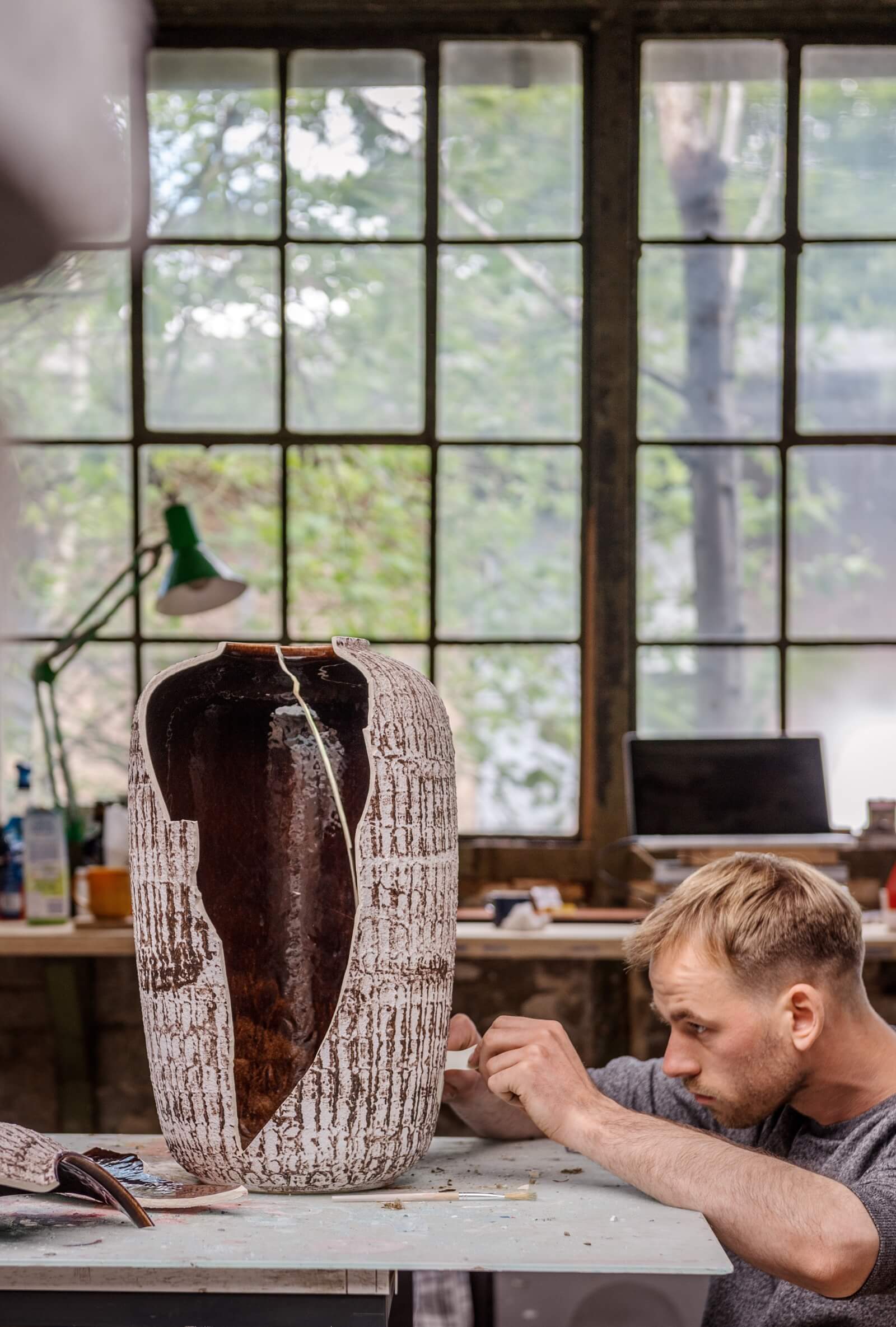
Lukas Wegwerth
COURTESY: Gallery FUMI
One or two of your favourite pieces over the years?
Sam: The first piece that comes to mind is Rowan Mersh’s first ‘Dreamcatcher’, which we showed at PAD in 2016. Obviously we had seen it in the studio when he was making it, but when we saw it at PAD I actually cried. I was so thrilled that it won the best contemporary piece that year. It reinforced our view of what a talented person he is.
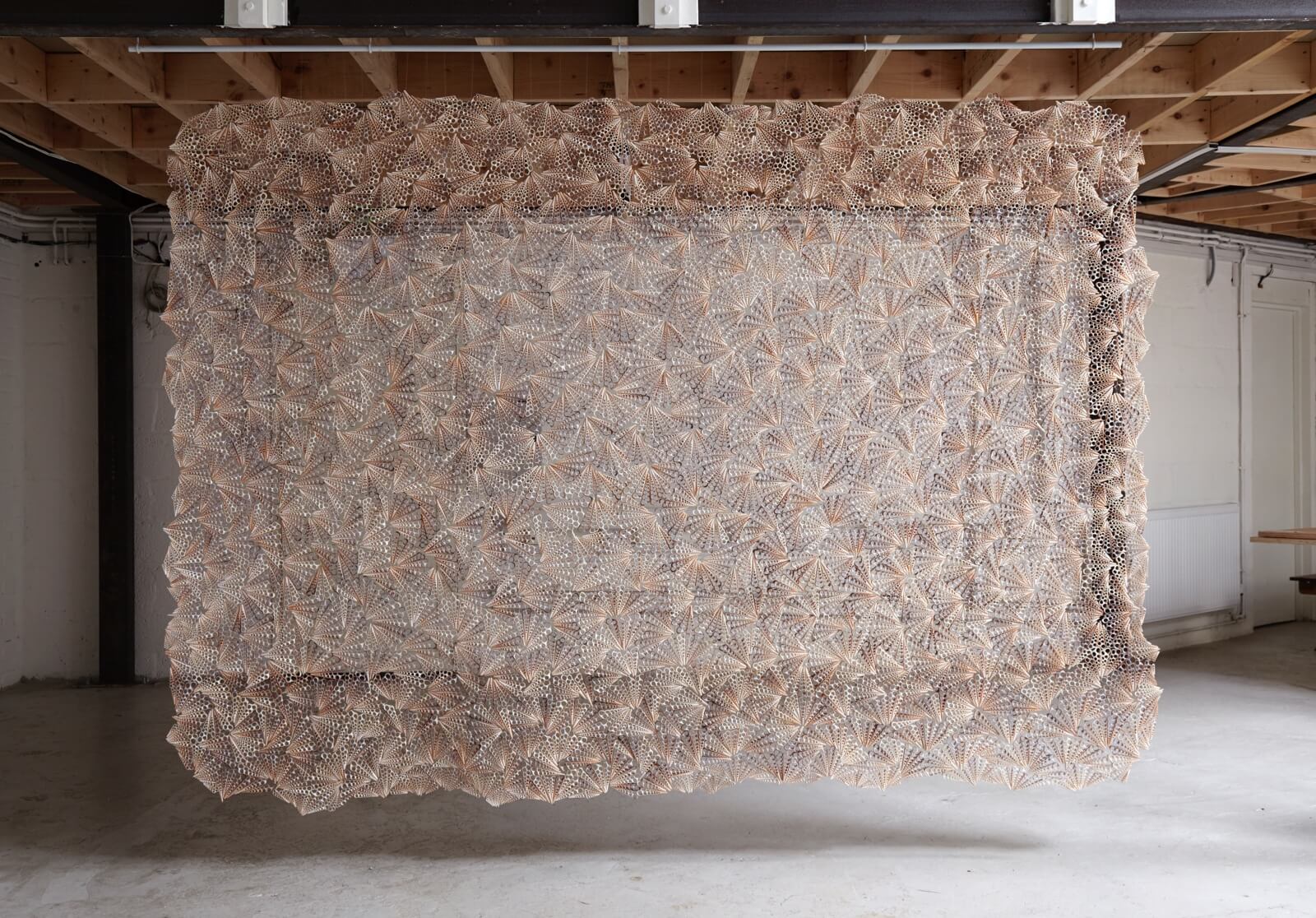
Rowan Mersh, ‘Asabikeshiinh (Dreamcatcher)’, 2016
COURTESY: Gallery FUMI
Valerio: We are very proud of the developments that have been achieved and accomplished with Bernadette Deddens and Tetsuo Mukai of Study O Portable, with their Fuzz work, using Jesmonite. Bernadette was our assistant at the gallery and she was making jewellery, and when she showed us this bangle she had made using Jesmonite, from the Fuzz series, we liked the concept and so we pushed her and Tetsuo to make some bowls. Little did we know that this would grow into major projects such as a fountain for the Hôtel de Crillon in Paris, and a four metre long table.
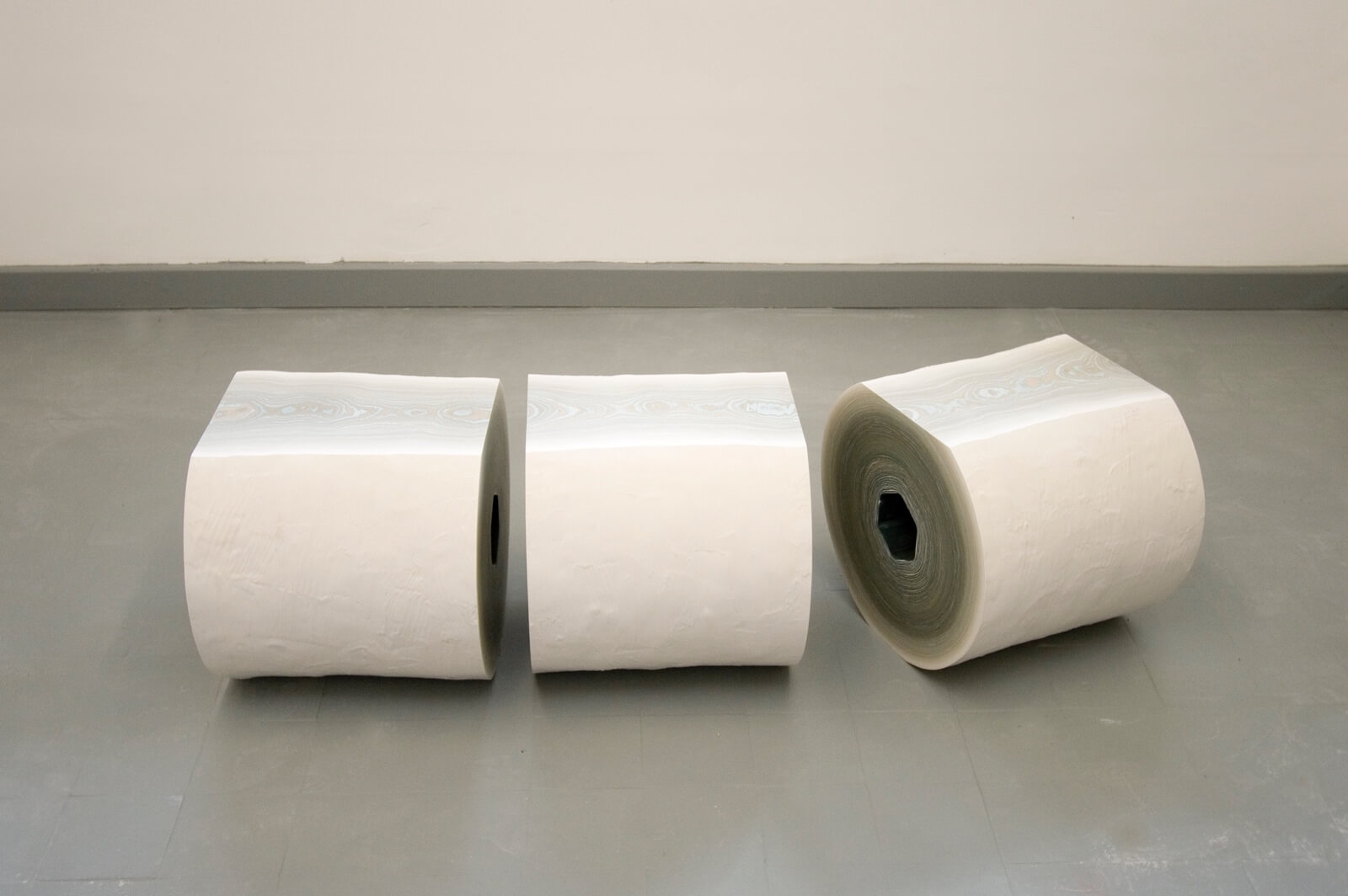
Study O Portable, ‘Fuzz Tri-Bench’, 2017
COURTESY: Gallery FUMI
What do you think you do well? Or best?
Sam: I think it is our interaction with people, and how we bring humanity into what we do. I think that that is a valuable asset.

Sam Pratt and Valerio Capo
COURTESY: Gallery FUMI
What do you want to do that you haven’t done yet?
Sam and Valerio: It would be nice to take it easy a bit … to find the right balance between having time for ourselves and time for the gallery. Seriously though, we would really love to organise temporary shows in extraordinary places in locations we have not taken FUMI before.
We haven’t been able to get that balance, it has all been gallery time. We are really looking forward to this summer because we are not going to Porto Cervo. The gallery is now ten years old, and it ought to be able to swim by itself. But there is still a hell of a long way to go.
Gallery FUMI – emerging/established designers pushing materials to their limits, usually in one-off commissions.
FUMI will be showing ‘URUSHI Wajima’ by Max Lamb at the London Design Festival, 16th – 22nd September, 2019.
